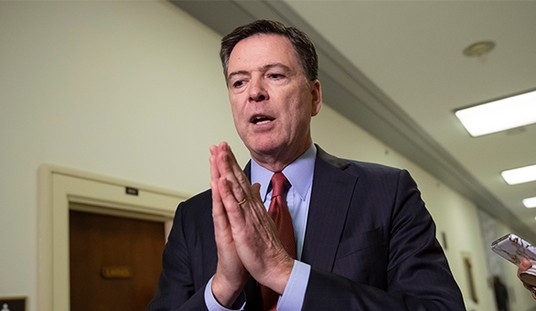While government spaceflight remains a hot mess, this past weekend was an exciting one for the real future of space — commercial spaceflight. Sunday saw a trifecta of breakthrough private activities.
First, at 08:45 Eastern Daylight Time, Orbital Sciences Corporation’s Cygnus capsule successfully rendezvoused with the International Space Station, where the crew grabbed it with the robotic arm and berthed and mated it to the facility, with about thirteen-hundred pounds of supplies for them, including chocolate. Unlike the SpaceX Dragon, which has had three successful flights to the station, Cygnus isn’t capable of returning payload. But the successful flight means that NASA now has two separate means of getting cargo to the ISS from American companies, independently of the Russians. The vehicle will remain mated for a month or so, and then be detached and deorbited to burn up in the atmosphere, with some of the trash from the station.
In the late afternoon, another commercial milestone was reached when the International Launch Services’ Proton flew again, after a hiatus from a launch failure in July, delivering a European communications satellite to orbit.
But the most exciting event was in the morning on the West Coast. It was one that many had been anticipating with excitement for many months. Just as the window opened, seemingly without a hitch, SpaceX launched their upgraded rocket, the Falcon-9 version 1.1 (designated Falcon-9R), from Vandenberg Air Force Base on the California coast north of Santa Barbara.
It represented several firsts for the company.
It was the first flight of any SpaceX vehicle from California, even though the company is based there and the rockets are manufactured in Hawthorne, about a hundred fifty miles down the coast, near Los Angeles. All previous Falcon 9 flights had been from Cape Canaveral in Florida.
It was also the first commercial satellite delivery mission for the Falcon 9 series. All previous flights had been either test flights for the Falcon 9 itself or the Dragon capsule, or NASA flights to deliver cargo to and from the ISS. The rocket delivered a Canadian satellite, called CASSIOPE, which will observe space weather, and interactions of solar activity with the upper atmosphere. It also delivered some very small satellites. All got a discount price for the launch, because it was actually an initial test flight of an essentially new vehicle.
The rocket was a significant design modification from the Falcon 9 version 1.0 that has been delivering Dragon to the ISS over the past year or so. It has an upgraded engine (going from a Merlin 1C to a Merlin 1D), with fewer parts for reliability and ease of manufacturing, and about fifty percent more thrust. The nine-engine configuration on the first stage was changed as well, from a square pattern of three by three to a circular one with an outer ring of eight and a center engine. The vehicle was stretched significantly, with much more capacity in its propellant tanks to allow more payload. The new configuration has a much higher aspect ratio, almost pencil like, compared to the old one, but it seemed to fly just fine.
But the stretch wasn’t just to increase payload, unless you consider the first stage itself part of the payload. History may judge the final “first” for Sunday’s flight to be the most significant. For the first time, not just for SpaceX, but for any launcher, three engines of the first stage were relit, to provide thrust to slow it down and allow it to enter the atmosphere intact. That is, the “R” in Falcon-9R stands for “reusable.”
Over the last year, the company has been flight testing an experimental vehicle at its test facility in rural Texas. Designated “Grasshopper,” it is a variant on a Falcon 9 first stage, with landing legs. It’s teaching SpaceX how to not just launch a vehicle vertically, but to land it as well, and the test program seems to have been going well. The goal is to eventually return the first stage of an operational Falcon 9 (and later, when it flies, the three cores of the Falcon Heavy) to the launch site, and reuse them.
Sunday’s flight test on an ostensibly operational mission was less ambitious. The goals were to see if 1) they could get the vehicle back into the atmosphere in one piece with the first burn (all previous Falcon 9 uncontrolled first-stage entries have been destructive) and 2) if they could gently drop it into the ocean with the thrust of a single engine, and recover it. The company has emphasized repeatedly over the past several months that this was not part of the primary mission goal, and that they didn’t have high expectations of success.
As it turned out, they seem to have succeeded at their first test goal, but failed the second. The first burn went as planned, and the stage did indeed enter intact. As it approached the water, the single engine was restarted on schedule, but because it didn’t have enough control over the roll (the long axis), it spun up a little too fast, and the centripetal acceleration pulled the propellants away from the engine inlet lines, prematurely shutting down before it could slow enough to allow undamaged impact.
Despite the recovery failure, company founder and CEO Elon Musk seemed very optimistic about the results. At a press conference after the launch, he announced follow-on plans. They will not attempt a first-stage recovery on the next two commercial flights, because it has too much of a performance impact, and the customers need maximum payload capability. But on the next ISS resupply mission, probably early next year, and most or all thereafter, he said that they would plan to recover, with a new twist — landing legs. This would indicate that they may have gotten enough information from this flight to not have to do an ocean-recovery test, instead having the very next test come back to terra firma. He said it would be an “aspiration,” if things go “super well,” to actually re-fly a Falcon 9 first stage by the end of next year. If so, it will dramatically reduce the company’s launch costs, providing even more profit margin with which to continue to reduce prices, and pressure their competition, in the U.S. and abroad.
Musk ended his press conference with the words, “many exciting days ahead.” Indeed, we may finally, half a century after the dawn of the space age, start to see rockets take off and land vertically, routinely, just like God and Robert Heinlein intended.









Join the conversation as a VIP Member